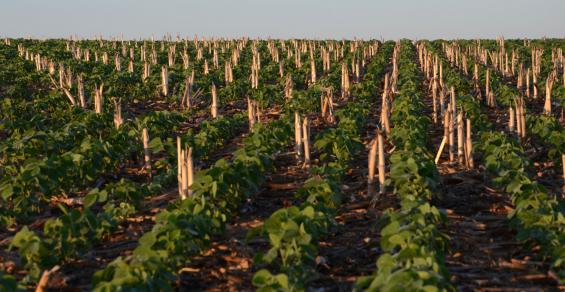Implementing soil health practices while maintaining future field — and food — productivity is root of project.
John Shanahan has been involved with agronomy for nearly 40 years. From his early work at Colorado State University to work with USDA and the Soil Health Institute, he’s long been involved with soil and soil health issues.
Today, he’s working at Agoro Carbon Alliance, where his experience with soil health is just part of the job. But before he moved to Agoro, he was involved with a study conducted by the Soil Health Institute that found soil health and food security are linked.
“Cargill gave a grant to the institute,” he notes. “They were interested in understanding the economics of adopting practices like no-till and cover crops.”
The project involved interviewing 100 farmers to explore their practices and whether taking on those management approaches worked for their operations.
“We had some criteria we established in terms of what farmers we wanted to interview,” Shanahan says. “These were farmers that had been on the journey for a number of years,” with no-till or cover crops.
Shanahan says soil health practices have a transition phase before they’re established. The farmers chosen for the study had been using cover crops for 10 years or more, or had been longtime no-tillers.
In those 100 interviews, Shanahan and his colleagues asked about the practices and what benefits were found. “We asked if there were reductions in input costs, or if there was a benefit yield-wise,” he says. “The typical interview lasted about two hours.”
The results of that work showed more than half of the farmers saw a yield increase. “Not maybe at the beginning of the process but after year two or three,” Shanahan says. “And almost all of them said that using those practices made their farms more resilient.”
That resiliency can be measured after a major rainstorm, when water running off cover crop or no-till fields is clear, or that the farmers could get into a field faster because of soil conditions. “So in addition to having increased yields from year to year, they saw less drought stress and less trouble with excess rainfall,” Shanahan says.
As for food security? “One of the premises we established in the report is that U.S. food production and exports to other countries is important. And soil health does affect food security,” he notes. “We produce a lot of food for the world, but we don’t want to do it at the risk of increased soil erosion.”
The key is implementing soil health practices while maintaining future field productivity. “Because when we lose topsoil, it takes a long time to replace it,” he says.
The transition to more practices promoting soil health is not a one-year-and-done deal. Agoro Carbon Alliance and others working with farmers to capture carbon aim to take a longer-term view of the issue — and finding ways to reward farmers who have been doing those practices for some time.
“We’re working with these carbon registries to try to get them to find ways to bring in those early-adopter operations, those legacy farms using soil health practices,” Shanahan says. “That’s one area we’re focusing on hard.”
Recently, Agoro announced after one year that it distributed more than $9 million to U.S. farmers and ranchers. Shanahan notes that the payments per farmer may not be that large, but they can work to help defray the costs of taking on soil health practices, which over time may offer other benefits.
Ryan Winter, Agoro Carbon grower success manager, adds: “Throughout the life of the contract, we are there to provide agronomic advice, answer questions about management practices, or share input on improving soil health and carbon storage on a field-by-field level.”
The Soil Health Institute report is available online and offers an in-depth look at how soil health practices impact food and farm security.



